Orchids are a very popular house plant, and it’s not hard to see why! Do you know how to propagate orchids? They have a distinctively beautiful appearance, they are fairly easy to take care of, and they are symbolic of love.
What more could you ask for?
As such, many orchid owners have become interested in propagation. At the end of the day, who wouldn’t want to fill their house with these wonderful plants for free?
If you’re interested in orchid propagation, we’ve got you covered.
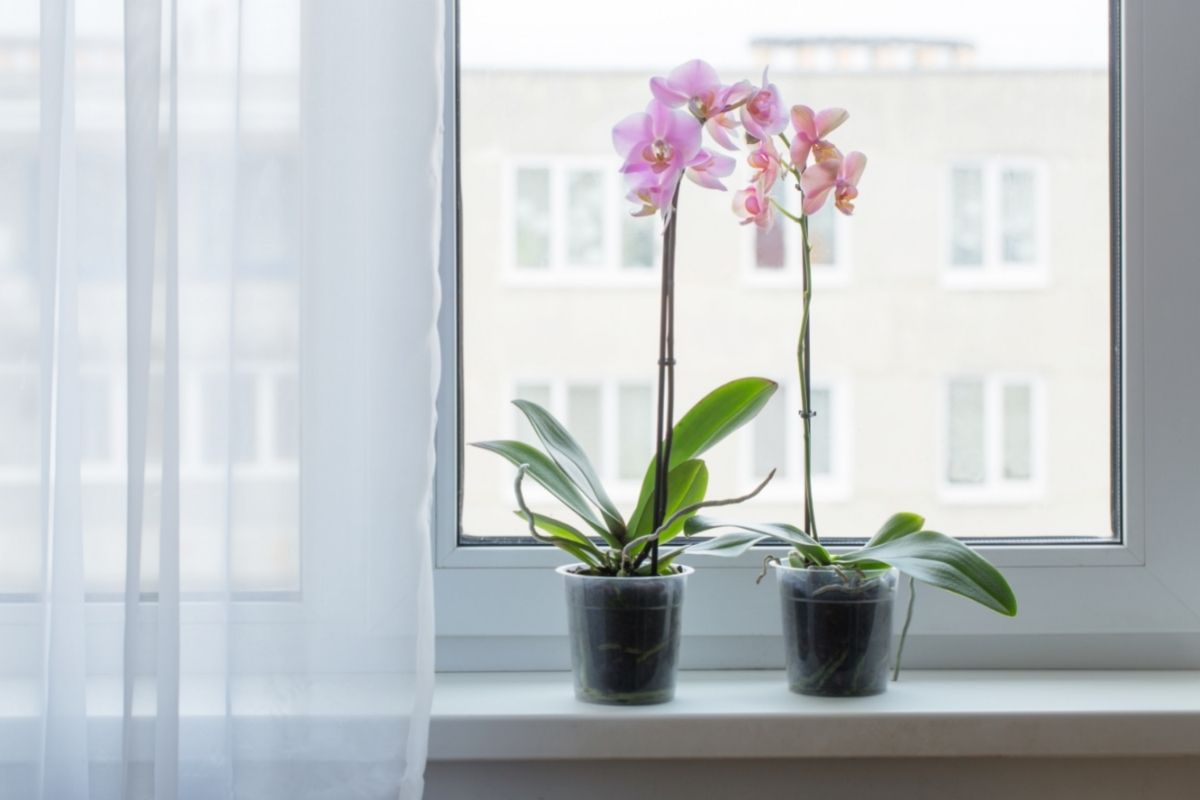
Check out our ultimate guide on orchid propagation below. We cover everything, from monopodial stem cuttings to Keikis growth, and everything in between!
We’ve also included some handy growing care tips to ensure that you’re providing your orchids with the necessary care and maintenance.
About Orchids
Orchids, scientifically known as Orchidaceae, are a family of flowering plants that have wonderfully colorful and fragrant blooms.
There are currently around 28,000 species of known orchids. For centuries, people have fallen in love with the unique and distinct appearance of orchids.
Orchids also have many associations with symbolic values. For instance, the orchid is thought to symbolize the values of love, beauty, refinement, fertility, thoughtfulness, and maturity.
Thanks to such symbolism and their beauty, they have become a very popular houseplant in recent years.
Orchid Propagation
Considering their symbolism and their gorgeous appearance, it is no surprise that you’re interested in propagating your orchid!
At the end of the day, what could be better than filling your house with as many orchids as possible?
What Is Propagation?
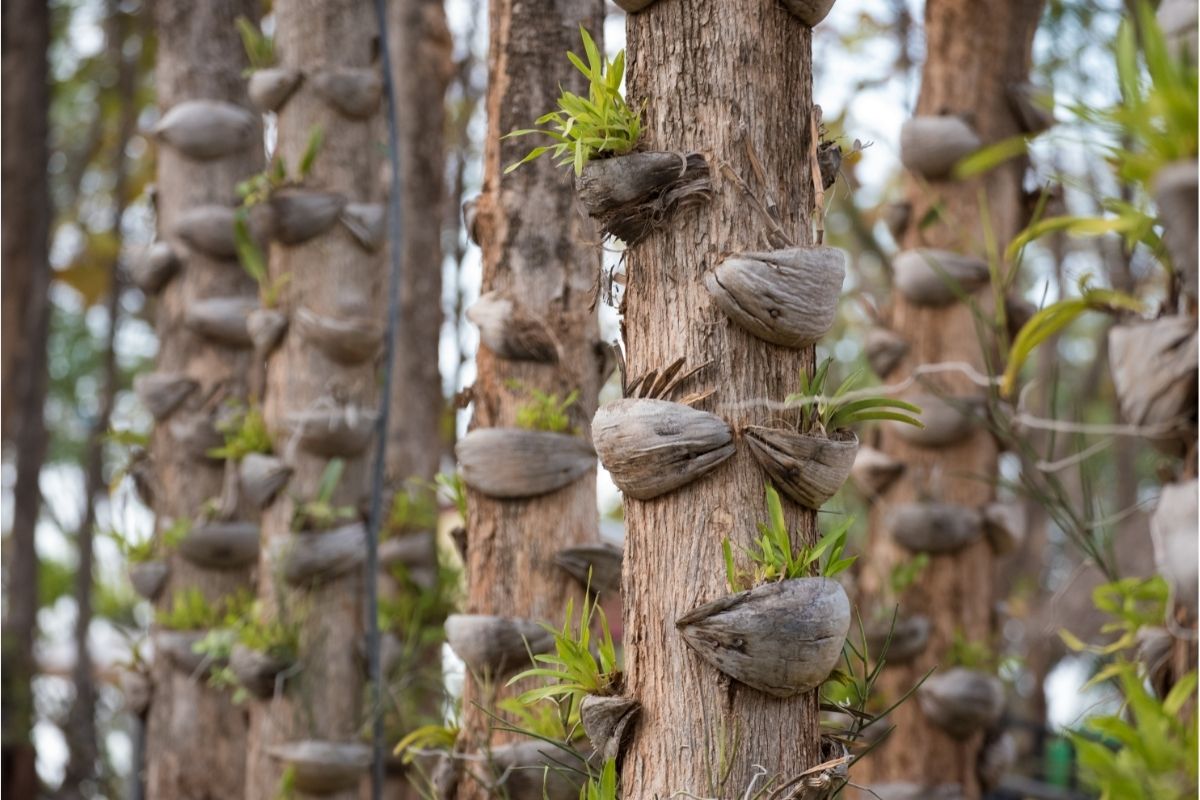
However, before we really get into the details, it is first necessary to understand exactly what propagation is.
Propagation is the process of creating new plants from a single plant or a pair of plants. There are two broad types of propagation: sexual and asexual.
Sexual propagation requires pollen (male) to fertilize a seed (female).
Whilst sexual propagation is cheaper on a larger scale, and as such, may be used by industrial growers, it isn’t very practical for people who want to duplicate their houseplants.
Here, we will discuss asexual propagation. This is the process of producing a new plant from a single plant, usually using a stem or leaf cutting.
This method is much easier for small-scale growers who want to re-create their beloved plants.
Related: Bring Your Orchid Back to Life! How to Revive an Orchid Plant
Orchid Propagation Methods
Ok, now that we’ve covered the basics, we can get into the good stuff. There are a few different methods for orchid propagation.
Below, we’ve listed the details of the most common methods and a step-by-step guide for each one.
Stem Cuttings
If you have propagated houseplants before, such as succulents, you might assume that you can do the same for orchids. Technically, you are right.
However, it is a little more complicated for orchids. Depending on the type of orchid you own, you will need to follow a different stem cutting method.
Monopodial Orchid
Monopodial orchids are single-stemmed orchids. A Phalaenopsis orchid is a monopodial orchid. To propagate a monopodial orchid using stem cuttings, check out the step-by-step guide below.
- Sterilize a garden knife or shears.
- ‘Top’ the orchid (essentially, cut it in half using your sterilized tool).
- The bottom part of the plant (that with the roots attached) can be left as it is. This will continue growing with the right care.
- Fill an appropriately sized pot (with drainage holes) with sphagnum moss.
- Plant your cutting in the pot.
- Place the pot in indirect sunlight and spray with water occasionally (but do not soak!).
- After some time, gently pull on the top of the cutting. If you feel resistance, the roots will have taken to the soil and it will continue to grow into a beautiful orchid!
It is worth mentioning that this method can only be done when monopodial orchids are mature and large enough.
Sympodial Orchid
Sympodial orchids form multiple canes or bulbs, rather than growing from a single stem.
Unfortunately, most sympodial orchids can’t be propagated using the stem cutting method. However, there is one exception to this rule.
The Dendrobium Nobile, a popular type of sympodial orchid, can be propagated using stem cuttings. Check out the step by step guide below:
- Sterilize a garden knife or shears.
- Using your preferred tool, cut a cane from your orchid.
- Place it in a seedling tray and cover it with wet sphagnum.
- When it begins to sprout, plant it in an appropriately sized pot.
Vining Orchid
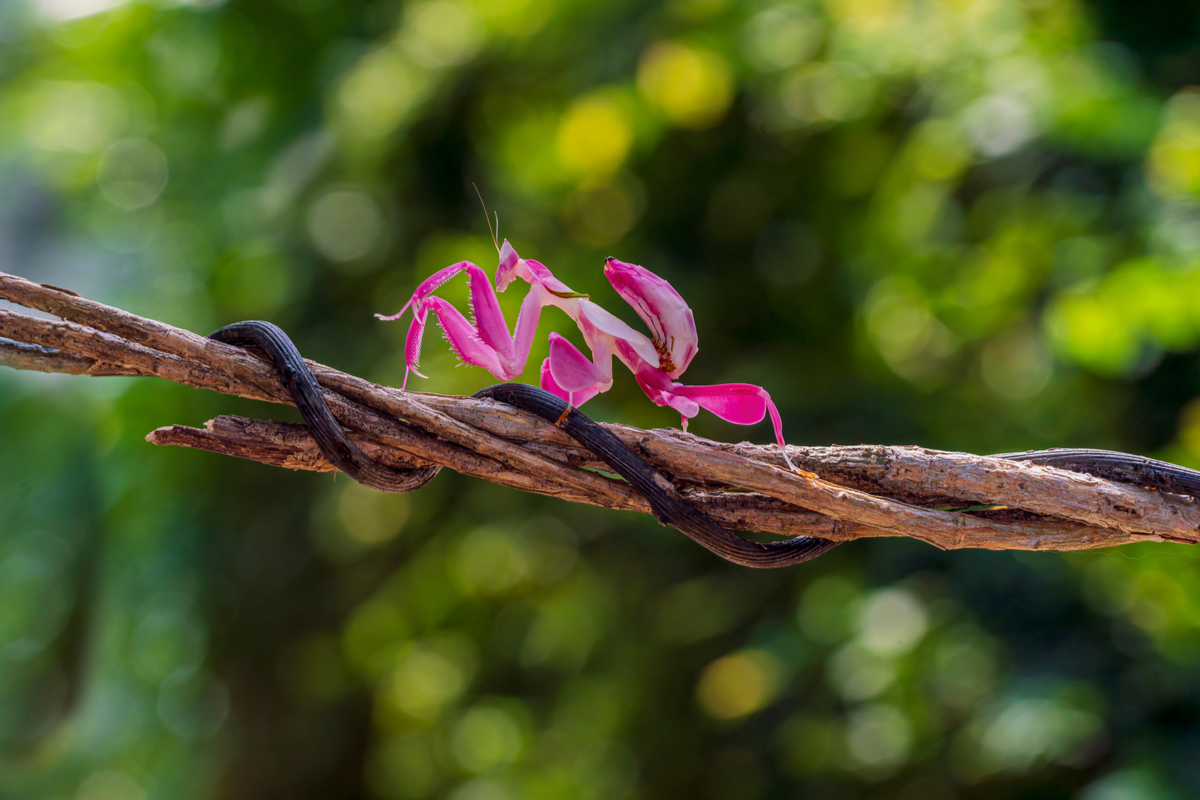
Believe it or not, there are some vining orchid species out there. They are less well-known, but they are just as beautiful as their non-vining counterparts.
As a bonus, propagating a vine orchid is way easier than other orchids! Check out the step-by-step guide below:
- Sterilize garden shears or a knife.
- Cut the vine with your tool of choice (you can snip it pretty much wherever you want!).
- Prepare an appropriately sized pot with sphagnum moss.
- Plant your cutting in the moss.
- Place it in indirect sunlight and mist it occasionally (do not soak it!).
- After some time has passed, gently tug on the plant. If you feel resistance, the roots have taken, and your orchid will grow with the appropriate care!
Division
You can also propagate an orchid using division. This can only be done using multi-stemmed (sympodial) orchids.
In monopodial orchids, there is nothing to separate. To propagate your orchid using division, check out the step-by-step guide below:
- Take your orchid out of its planter.
- Using your hands, divide the rhizome clump into a number of new orchids. Each one should have around 4 growing bulbs each.
- Prepare as many pots (with a very well-draining soil or mixture) as you need to plant your new orchids.
- Plant your new orchids in the pots. They should continue to grow without too many problems.
Keikis
If you’re in luck, your orchid might grow a Keiki. A Keiki is essentially a baby orchid. If your orchid has done this, it has essentially propagated itself!
You just have a few more things to do to ensure that your orchid baby grows into an adult. Check them out below:
- Leave the Keiki alone for a while to ensure that it has grown a healthy root system.
- Once it has grown a few leaves, take the orchid and the baby out of the pot.
- Similarly to the method of division, separate the baby orchid from the mother. If necessary, use a clean pair of sheers or a garden knife.
- Once separated, put the mother orchid back into its container, and pot the baby orchid in a new container with the same type of soil you use for the mother.
- From here, with the appropriate care, it should grow perfectly.
General Orchid Care
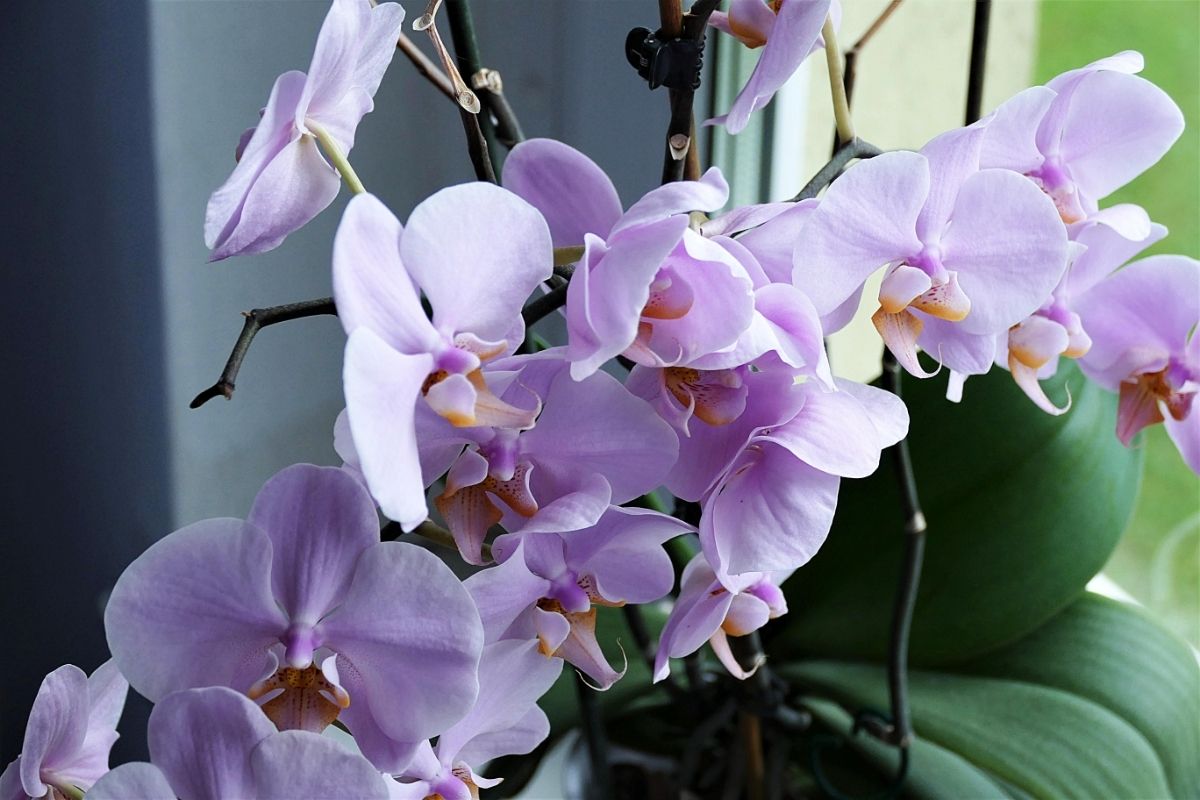
Once you have propagated your orchid, the hard work starts! If you want your new orchid to thrive, you will need to give it the appropriate care and attention.
Check out our orchid care tips and tricks below to ensure that you’re providing the most appropriate environment.
Light
Orchids grow well in lots of indirect sunlight. For their flowers to bloom, they need a good amount of gentle sunlight. They prefer to be kept near windows.
Soil
Orchids don’t tend to grow well using regular soil. Instead, we recommend making a homemade potting mix yourself. You should use materials such as bark, moss, and cork. These materials will ensure that the orchid has enough room to breathe.
Water
Orchids don’t need very much water at all. During the summer months, water your orchid weekly.
Ensure that it is soaked through after watering, but give it enough time to dry out before the next watering.
In the winter, you only need to water or orchid once a month or so. If you over-water your orchid, and it is allowed to sit in excess water, root rot could take hold.
Temperature And Humidity
Orchids love the warmth and high humidity. They do best in temperatures between 50 and 85 degrees Fahrenheit.
If your house isn’t particularly humid, occasionally misting your orchid should make up for that. Also, ensure that your orchid isn’t positioned next to a draft or air conditioning unit.
Fertilizer
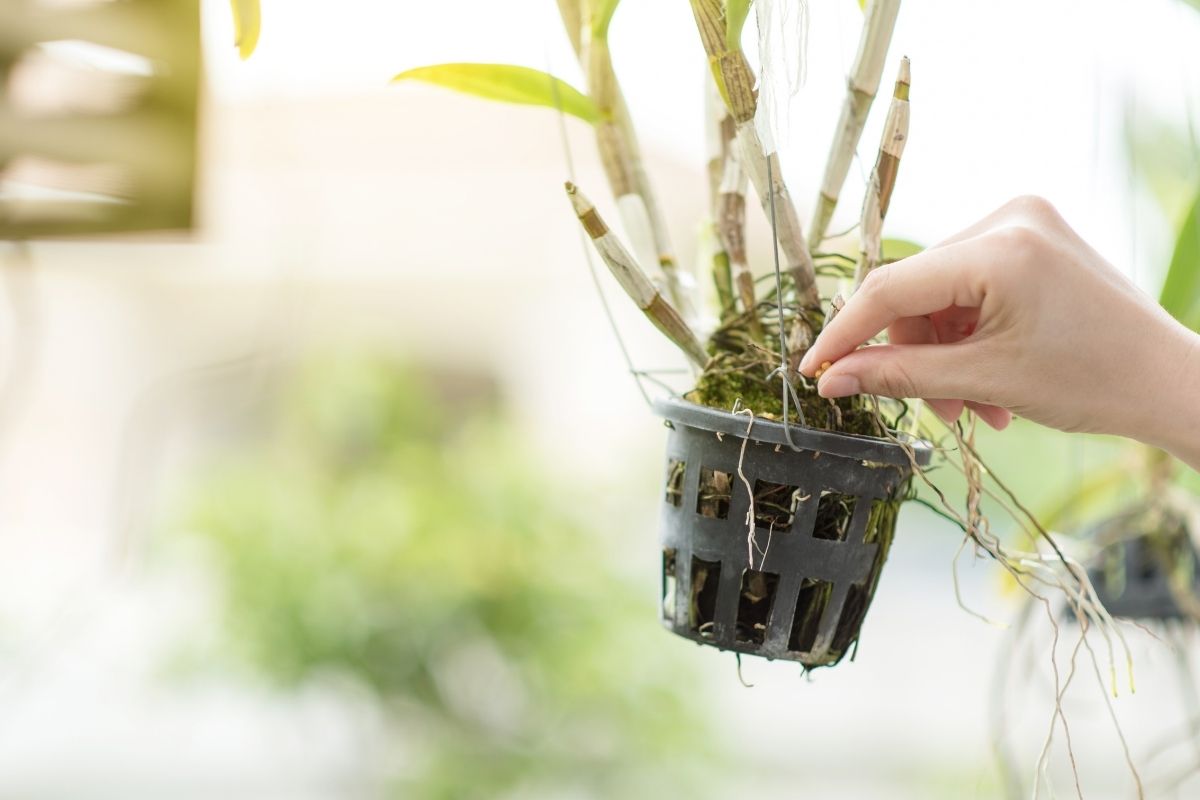
You don’t necessarily need to fertilize your orchids. However, if you feel as if they need a bit of a boost, you can feed it using a weak solution of a powder fertilizer.
It is important to note that you should never fertilize your orchid in the winter.
Related: 9 Black Orchids Varieties (with Pictures and Care Guide)
Frequently Asked Questions
How Long Does It Take To Grow An Orchid Via Stem Cuttings?
It takes a few months for your stem cuttings to show some decent growth. This process requires patience, but it is definitely worth it.
To ensure that they are growing as quickly as possible, ensure that you are providing your cuttings with the perfect conditions and care.
How Long Does It Take For A Keiki To Bloom?
When it comes to any kind of orchid growth, slow and steady wins the race. If you plant your Keiki, you can assume that it will take as long as 2 or even 3 years to bloom.
We know that this sounds like a very long time, but it is the most rewarding experience to see it finally bloom and have all of your hard work pay off!
What Kind Of Fertilizer Should I Use For Orchids?
Urea is a common ingredient in many fertilizers. Unfortunately, orchids don’t like Urea very much. As such, it is best to purchase a urea-free fertilizer for your orchids.
We recommend using a very diluted Urea-free formula once a week for your orchids.
Final Thoughts
Orchids make for truly wonderful houseplants. We hope that this article has inspired you to propagate your orchids! You’ll have a house full of these gorgeous, symbolic plants in no time.
Editor’s Recommendations
19 Different Types Of Brown Plants (Including Photos)
25 Different Chinese Plants (Including Photos)
16 Types Of Coral Plants (Including Photos)







